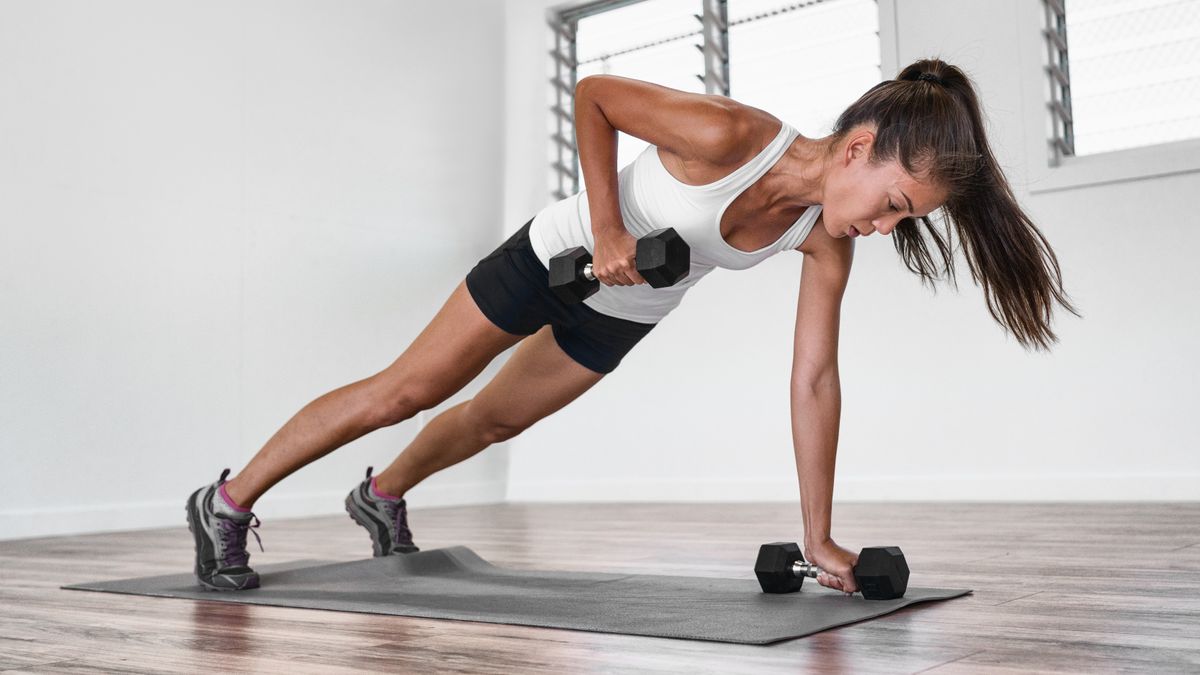Everyone has those exercises they just hate. You know, the one you’ll go out of your way to avoid, or the one you’ve come up with every excuse under the sun to modify in class. For me, it’s renegade rows.
Planks, I don’t mind. Dumbbell rows are absolutely fine. But put the two together, and I hate them. Yet, in a recent exercise class, my instructor called me out for skipping the move, so I set myself a challenge to try harder and doing 40 a day felt like a decent challenge.
Of course, doing the same exercise day after day isn’t recommended by any personal trainer, but in the name of good journalism, I unrolled my exercise mat, grabbed a pair of the best adjustable dumbbells, and got to work. Read on to find out what happened.
It goes without saying that what works for me and my body might not be right for you. If you’re new to an exercise, or you’re returning from injury, it’s a good idea to get your form checked with a trainer before adding repetitions or weight to the exercise. Looking for more workout inspiration? Here’s what happened when I tried this brutal 10-minute ab workoutor when one fitness writer did 50 Russian Twists every day for a week.
How to do a renegade row
As a compound exercise, the renegade row works almost all of the muscles in your upper body, as well as the deep stabilization muscles in your core, as you try and hold your body still in the plank position.
To do a renegade row, start in a plank position with a dumbbell in each hand. Don’t opt for a weight that is too heavy — you need to be able to row without twisting your hips. Engage your core, then row one arm back, until your upper arm is slightly higher than your torso, then slowly lower it back down to the ground and switch sides.
If this is too tricky, drop to your knees until you have mastered the move. If you’re looking for more of a challenge, swap the dumbbells for kettlebells, which provide a less stable base.
I did 40 renegade rows a day for a week — here’s what happened
On Day One of this challenge, I opted to do four sets of 10 reps, to allow myself to slow down and focus on really holding the plank correctly. I asked a personal trainer to check my form, and he told me to move my legs slightly wider apart than you would do in a normal plank — they should be about shoulder-width apart for this exercise.
He also watched me do a few reps and mentioned that I was swinging my hips too much, so to really focus on engaging my core during the exercise. I put my ego to one side and dropped down to a lighter weight for the rest of the reps.
On Days Two and Three, I repeated the four sets of 10, but soon felt it in my hands as much as my abs and arms. Gripping onto the weights in the plank caused a bit of discomfort, especially as my metal dumbbells aren’t the softest. As a modification, I put one hand flat on the mat, completed all the rows on one side, then switched. Not ideal, but on we go.
By Day Four, I felt like I was able to grip the weights better and get through the reps without as much discomfort. Practice might not make perfect, but this move was an eye-opener that my grip strength is definitely something I need to work on.
For the final three days of the challenge, I carried on with the renegade rows, but unlike similar week-long challenges, they never got easier or more enjoyable. That said, by the end of the week, I felt like I was more stable in the plank, and able to slightly increase the weights of the dumbbells I was rowing.
Next time my trainer announces it’s time for renegade rows, I definitely won’t avoid them, but I can’t promise I won’t roll my eyes either.
